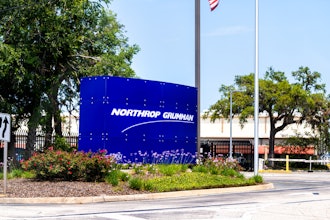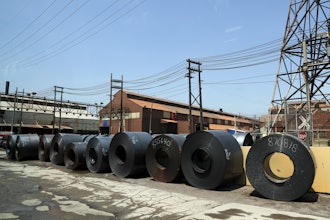NEW ORLEANS (AP) — An environmental watchdog group filed a lawsuit Thursday against the company it blames for an oil spill 11 miles (18 kilometers) off the coast of Louisiana, claiming oil has been flowing into the Gulf of Mexico for more than seven years with few details about what's being done to stop it.
Waterkeeper Alliance claims hundreds of gallons (liters) of oil are leaking every day from the site where an offshore platform and 28 oil wells owned by Taylor Energy Co. were damaged by a seafloor mudslide triggered by Hurricane Ivan in 2004.
By comparison, the 2010 blowout of BP PLC's Macondo well spewed more than 200 million gallons (757 million liters) total, for an average of about 2.35 million gallons (8.9 million liters) a day, according to government figures.
The New York-based alliance said they filed the federal lawsuit in New Orleans because Taylor Energy and government regulators refuse to answer basic questions about their spill response.
"This spill is in relatively shallow water," said Justin Bloom, a regional director for the group. "If it takes more than seven years to contain a spill like this in a relatively accessible environment, what would happen in a dangerous and inaccessible deepwater environment?"
Taylor Energy didn't immediately respond to calls Thursday seeking comment. A spokeswoman for the Interior Department's Bureau of Safety and Environmental Enforcement said the agency doesn't comment on pending litigation.
The suit accuses the New Orleans-based company of violating the Clean Water Act and Resource Conservation Recovery Act and seeks civil penalties of up to $37,500 per day.
Waterkeeper Alliance says satellite imagery and an analysis of oil slicks indicate oil is leaking from the site at a rate of 100 to 400 gallons (378 to 1,514 liters) per day.
The Coast Guard, however, says the average amount of oil leaking from the site is 7.5 gallons (28 liters) per day. Oil sheens from the site have been "minimal" and have never made landfall, according to the Coast Guard, which says a total of 12,720 gallons (48,149 liters) of oil have been reported from daily observations since the spill started in 2004.
The Coast Guard also says three containment domes were deployed to capture the oil.
"The sheen size of a few gallons (in volume as observed over the sheen dimensional area) has been too thin of an oil film to warrant offshore recovery operations," a Coast Guard statement says.
The April 20, 2010, blowout of the Macondo well triggered America's worst offshore oil spill, with more than 200 million gallons (757 million liters) of oil gushing into the Gulf. Oil from the BP spill washed up on beaches, befouled marshes and disrupted the region's seafood industry.
While the spill blamed on Taylor Energy is minuscule in comparison, Bloom said it's reasonable to assume the leak has had a "cumulative impact" harmful to the Gulf's environment.
The Interior Department directed Taylor Energy to deposit $500 million in a trust to cover spill-related expenses, according to a report issued by the Waterkeeper Alliance. The alliance says a rig that Taylor Energy hired to plug the damaged wells hasn't been seen at the site since June 2011 even though oil slicks continue to be spotted nearby.
"This suggests that fixing the leak is a low priority for the company and government regulators," the report says.
Other environmental groups are named as plaintiffs in the suit, including the Louisiana Environmental Action Network, Atchafalaya Basinkeeper, Galveston Baykeeper and Louisiana Bayoukeeper.
In October, Waterkeeper Alliance filed a notice of its intent to sue and sent demand letters to Taylor Energy and two other companies, Korea National Oil Corp. and Samsung C&T Corp. In 2008, Taylor Energy sold most of its energy assets for an undisclosed price to the other two companies, which formed a joint venture to operate them. Korea National and Samsung, however, have said Taylor Energy retained ownership of the production platform and wells that are the target of the lawsuit.






















